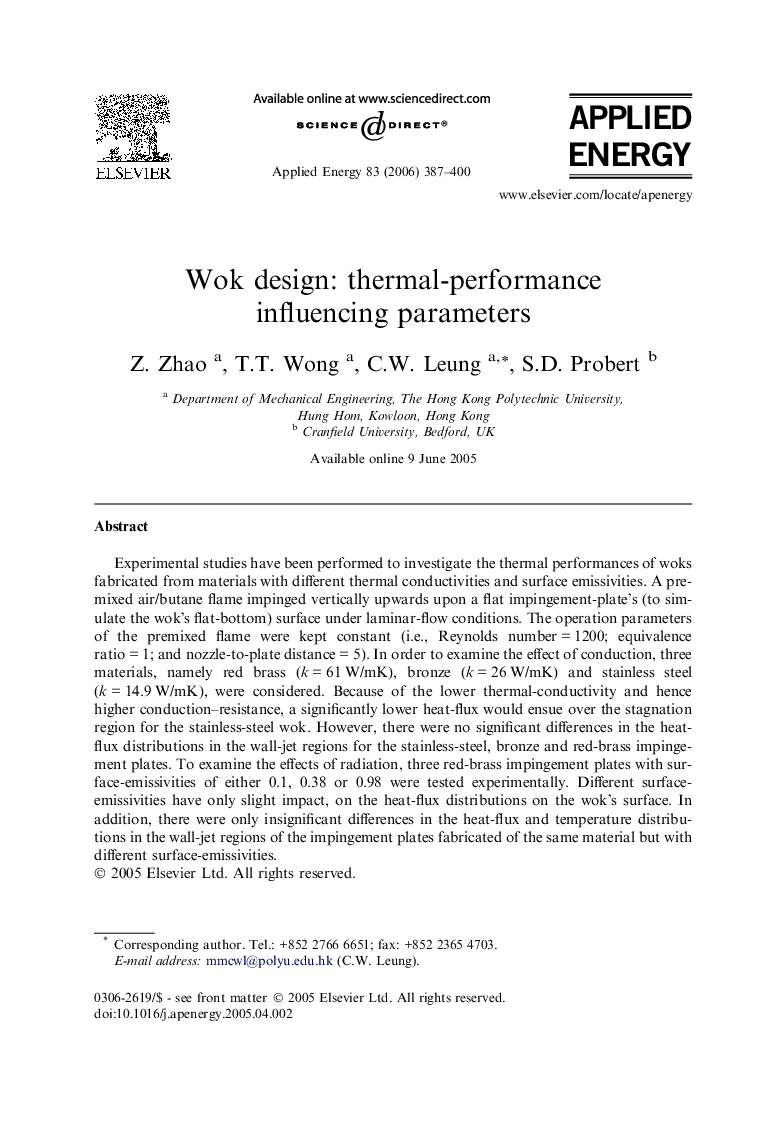| Article ID | Journal | Published Year | Pages | File Type |
|---|---|---|---|---|
| 245484 | Applied Energy | 2006 | 14 Pages |
Experimental studies have been performed to investigate the thermal performances of woks fabricated from materials with different thermal conductivities and surface emissivities. A pre-mixed air/butane flame impinged vertically upwards upon a flat impingement-plate’s (to simulate the wok’s flat-bottom) surface under laminar-flow conditions. The operation parameters of the premixed flame were kept constant (i.e., Reynolds number = 1200; equivalence ratio = 1; and nozzle-to-plate distance = 5). In order to examine the effect of conduction, three materials, namely red brass (k = 61 W/mK), bronze (k = 26 W/mK) and stainless steel (k = 14.9 W/mK), were considered. Because of the lower thermal-conductivity and hence higher conduction–resistance, a significantly lower heat-flux would ensue over the stagnation region for the stainless-steel wok. However, there were no significant differences in the heat-flux distributions in the wall-jet regions for the stainless-steel, bronze and red-brass impingement plates. To examine the effects of radiation, three red-brass impingement plates with surface-emissivities of either 0.1, 0.38 or 0.98 were tested experimentally. Different surface-emissivities have only slight impact, on the heat-flux distributions on the wok’s surface. In addition, there were only insignificant differences in the heat-flux and temperature distributions in the wall-jet regions of the impingement plates fabricated of the same material but with different surface-emissivities.
